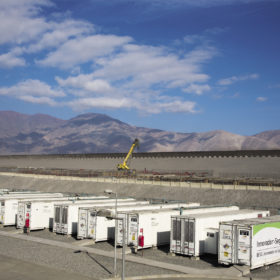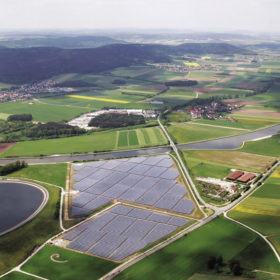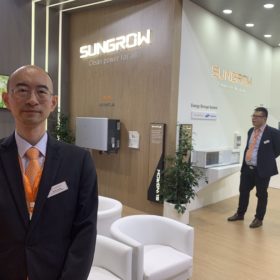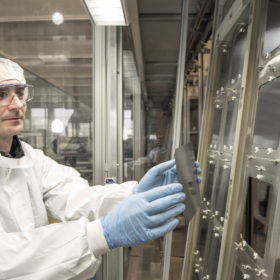Why Shell’s acquisition of sonnen is a tipping point
Philipp Schröder, CEO CAPinside, former sonnen Managing Director
A burning issue
Deployment of lithium-ion battery storage systems is growing rapidly, with Wood Mackenzie recently predicting that the U.S. market alone could be worth $4.7 billion within the next five years. Demand is rising for both grid-scale and behind-the-meter applications in a number of markets throughout the world, particularly in East Asia, the global hub of lithium-ion battery production. But a recent string of fires in South Korea – one of the world’s biggest markets for stationary storage, thanks to a concerted government push – has rekindled smoldering concerns about safety.
Lower temperature, higher performance
A combination of a heat sink effect, with radiation and passive convection dissipation, results in cooler modules, and higher power output. This is the technique applied by Coolback, which is introducing a new backsheet/frame concept to the market for the first time this month. Coolback Company CEO Simon Meijer sets out the technology, effects, and strategy to market.
pv magazine test Results from the first two years
The pv magazine test program was launched in July 2017. The test was designed to help investors in their module purchasing process, while at the same time allowing manufacturers to spot problems and improve their production processes. Fast forward to today and we have 16 products from 10 manufacturers covering five different module and cell types installed on the rooftop of Gsola’s facility in Xi’an China, having been tested and characterized in its lab. Among the 16 products, 14 were provided by manufacturers and two were selected directly from warehouses for reference. George Touloupas, Director of Technology and Quality at CEA, and Chi Zhang, Junior Engineer, Technology and Quality, at CEA delve into the valuable performance data.
Chile taps ‘white gold’ for security of energy supply
Chile is home to a massive 10.3 million tons of lithium reserves, most of which is found in the Atacama Desert in the northern part of the country. With some of the highest solar irradiation levels on Earth, this region also boasts the perfect conditions for generating solar power. Developments in the photovoltaic market, alongside implementation of more efficient energy storage systems, are positioning Chile as a regional leader in this field. So what does the future hold for battery energy storage systems (BESS) in Chile, and what obstacles lie in their way?
Lead-free PV
Should lead still be used in solar? Are there realistic alternatives? These are the questions pv magazine is seeking to answer throughout the fourth quarter of 2019, as part of our newly launched UP sustainability initiative.
Final thought: Subsidy free solar in sight
Around the globe today, the solar PV industry continues to rely on the Chinese market for installation volume and scale. This market achieved the deployment of an estimated 44 GW of capacity in 2018, having brushed the 50 GW mark in the previous year. The world’s most populous nation will also remain its largest PV market for […]
48 hours in… Seoul
After the Korean War, Seoul rose from the ashes to be standing tall as one of the most appealing metropolitan cities in the world, and now it is one of the leading places for business, culture, and environmental sustainability. With a population of a little over 10 million, the capital offers visitors to Green Energy Expo everything from futuristic skyscrapers and stylish Michelin-starred restaurants, to haunting historical sites and a rich cultural heritage at every step.
Hacking PV production, an der Havel
The regional train line from Berlin Hauptbahnhof to Brandenburg an der Havel is a far cry from the crowded CalTrain linking San Francisco with Silicon Valley. But as pv magazine discovered as it hopped on board last month, perovskite PV development is reviving hopes for solar manufacturing in the region – hacker style.
Perovskites: Multiple attributes come together
Named after a Russian noble in the 19th century, perovskites have become a darling of the PV research community in recent years. And while there exist many doubters to its industrial outlook in solar applications, Ronn Andriessen, the Director of Solliance Solar Research, which operates facilities in Germany, the Netherlands, and Belgium, believes the perovskite family holds almost unlimited potential for the PV sector.










